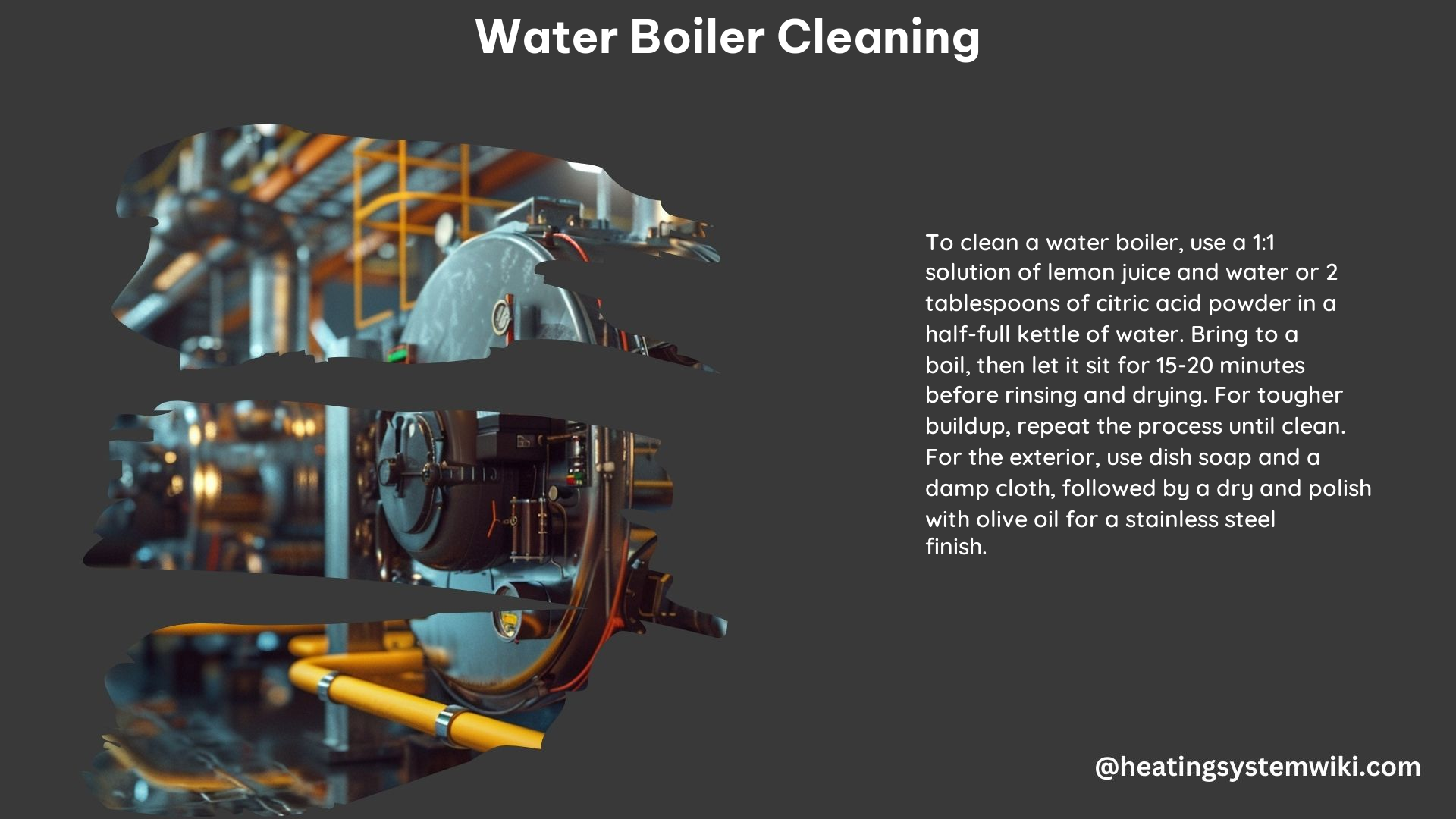Water boilers, especially electric kettles, are prone to lime and rust buildup due to the minerals present in water. This buildup can affect the efficiency and longevity of the boiler. Here is a comprehensive guide on effective methods for cleaning and descaling a hot water boiler.
How Often to Clean
The frequency of cleaning a water boiler depends on several factors:
- Water Quality: If you live in an area with hard water, you may need to clean your boiler more frequently, as the mineral content is higher.
- Usage Frequency: The more often you use your water boiler, the quicker the buildup will occur.
- Boiler Type: Some boiler materials, such as stainless steel, are more resistant to scale buildup than others, like aluminum.
As a general rule, it’s recommended to clean your water boiler every 3-6 months or when you notice significant buildup. However, it’s essential to monitor your boiler’s condition and adjust the cleaning schedule accordingly.
Methods for Cleaning and Descaling

There are several effective methods for cleaning and descaling a water boiler. Each method has its own advantages and can be tailored to the specific needs of your boiler.
Vinegar Method
- Vinegar Solution: Fill the boiler with a solution of 1/3 to 1/2 of the boiler’s capacity with white vinegar (distilled or apple cider), then fill up the rest with water.
- Boiling: Bring the vinegar solution to a boil.
- Soaking: Let the solution sit for 15-30 minutes to allow the vinegar to break down the lime and mineral deposits.
- Rinsing: Pour out the vinegar solution and rinse the boiler thoroughly with clean water to remove any remaining residue.
Citric Acid Method
- Citric Acid Solution: Fill the boiler with water and add 1-2 tablespoons of citric acid per half tank of water.
- Boiling: Bring the citric acid solution to a boil.
- Soaking: Let the solution sit for 15-30 minutes to allow the citric acid to dissolve the buildup.
- Scrubbing: If necessary, use a soft-bristled brush or sponge to gently scrub the interior of the boiler to remove any stubborn deposits.
- Rinsing: Pour out the citric acid solution and rinse the boiler thoroughly with clean water.
Baking Soda Method
- Baking Soda Solution: Fill the boiler with water and add 1-2 tablespoons of baking soda per half tank of water.
- Boiling: Bring the baking soda solution to a boil.
- Soaking: Let the solution sit for 10-30 minutes to allow the baking soda to react with the deposits.
- Scrubbing: Gently scrub the interior of the boiler with a soft-bristled brush or sponge to remove any remaining buildup.
- Rinsing: Rinse the boiler thoroughly with clean water to remove any baking soda residue.
Lemon Juice Method
- Lemon Juice Solution: Fill the boiler with water and add 1 tablespoon of lemon juice per half tank of water.
- Boiling: Bring the lemon juice solution to a boil.
- Soaking: Let the solution sit for 15-30 minutes to allow the citric acid in the lemon juice to break down the deposits.
- Rinsing: Pour out the lemon juice solution and rinse the boiler thoroughly with clean water.
Soda Method
- Soda Solution: Fill the boiler with 1/4 to 1/2 tank of flat soda (e.g., Coke or Pepsi).
- Boiling: Bring the soda solution to a boil.
- Soaking: Let the solution sit for 30 minutes to allow the carbonation and acidity to work on the buildup.
- Scrubbing: If necessary, use a soft-bristled brush or sponge to gently scrub the interior of the boiler to remove any remaining deposits.
- Rinsing: Pour out the soda solution and rinse the boiler thoroughly with clean water.
Additional Tips
- After cleaning, run a few cycles of plain water through the boiler to remove any remaining vinegar, citric acid, or cleaning agent odor.
- Regularly drying the boiler after use can help prevent future buildup.
- For stainless steel kettles, use a soft cloth and mild soap to clean the exterior and maintain its shine.
- Consider using a water filter or softener to reduce the mineral content in your water, which can help slow down the rate of buildup.
- If you notice persistent or severe buildup, it may be necessary to use a commercial descaling solution or contact a professional for a more thorough cleaning.
Technical Specifications
| Cleaning Method | Solution Ratio |
|---|---|
| Vinegar Method | 1/3 to 1/2 boiler capacity with vinegar, fill the rest with water |
| Citric Acid Method | 1-2 tablespoons of citric acid per half tank of water |
| Baking Soda Method | 1-2 tablespoons of baking soda per half tank of water |
| Lemon Juice Method | 1 tablespoon of lemon juice per half tank of water |
| Soda Method | 1/4 to 1/2 tank of flat soda |
